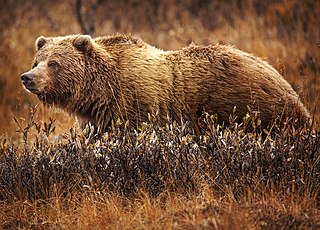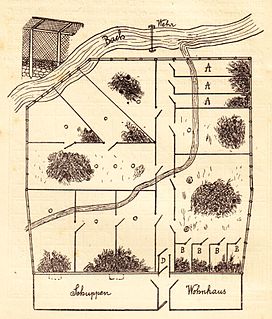 W
WFur is a thick growth of hair that covers the skin of many different animals. It is a defining characteristic of mammals. It consists of a combination of oily guard hair on top and thick underfur beneath. The guard hair keeps moisture from reaching the skin; the underfur acts as an insulating blanket that keeps the animal warm.
 W
WA bearskin is a tall fur cap, usually worn as part of a ceremonial military uniform. Traditionally, the bearskin was the headgear of grenadiers and remains in use by grenadier and guards regiments in various armies.
 W
WA beaver hat is a hat made from felted beaver fur. They were fashionable across much of Europe during the period 1550–1850 because the soft yet resilient material could be easily combed to make a variety of hat shapes. Smaller hats made of beaver were sometimes called beaverkins, as in Thomas Carlyle's description of his wife as a child.
 W
WThe boyar hat was a fur hat worn by Russian nobility between the 15th and 17th centuries, most notably by boyars, for whom it was a sign of their social status. The higher hat indicated the higher status.
 W
WFur is no longer primarily obtained through animal trapping; most fur comes from farms, where animals are raised to be killed for their fur. Fur farming operations provide about 80 percent of overall fur production. Common sources of fur include mink, raccoon, and fox. Up to 30 million mink furs are produced annually in North America and Europe. The production of pelts involves large-scale tanning and disposal of animal carcasses after they are skinned. Fur production reportedly impacts the environment negatively through the release of gases, chemicals and fossil fuels.
 W
WFake fur, also called faux fur, is known as pile fabric, which is engineered to have the appearance and warmth of animal fur.
 W
WFur clothing is clothing made of furry animal hides. Fur is one of the oldest forms of clothing, and is thought to have been widely used as hominids first expanded outside Africa. Some view fur as luxurious and warm; others reject it due to personal beliefs of animal rights. The term 'fur' is often used to refer to a coat, wrap, or shawl made from the fur of animals. The most popular kinds of fur in the 1960s were blond mink, silver striped fox and red fox. Cheaper alternatives were pelts of wolf, Persian lamb or muskrat. It was common for ladies to wear a matching hat. In the 1950s, a must-have type of fur was the mutation fur and fur trimmings on a coat that were beaver, lamb fur, Astrakhan and mink.
 W
WFur farming is the practice of breeding or raising certain types of animals for their fur.
 W
WThe Fur Farming (Prohibition) (Scotland) Act 2002 is an Act of the Scottish Parliament "to prohibit the keeping of animals solely or primarily for slaughter for the value of their fur". It received Royal Assent on 11 April 2002.
 W
WThe Fur Farming (Prohibition) Act 2000 is an Act of the Parliament of the United Kingdom to "prohibit the keeping of animals solely or primarily for slaughter for the value of their fur" in England and Wales. It received Royal Assent on 23 November 2000.
 W
WThe International Fur and Leather Workers Union (IFLWU), was a labor union that represented workers in the fur and leather trades.
 W
WIn Ashkenazi Jewish tradition, a kolpik is a type of traditional headgear worn in families of some Chassidic rebbes of Galician or Hungarian dynastic descent, by their unmarried children on the Sabbath (Shabbat), and by some rebbes on some special occasions other than Shabbat or major holidays. The kolpik is made from brown fur, as opposed to a spodik, worn by Polish chassidic dynasties, which is fashioned out of black fur. The shtreimel, another similar type of fur hat worn by Hasidim, are shorter in height, wider, and disc-shaped, while kolpiks are taller, thinner in bulk, and of cylindrical shape.
 W
WA kozhukh is a traditional Ukrainian fur coat.
 W
WSebastian Lotzer was born in Horb am Neckar. He was a furrier by trade. During his journeyman years, while in Memmingen, he became secretary to the Baltringer Haufen, a peasant army during the German Peasants' War. Lotzer was heavily influenced by theologian Christoph Schappeler.
 W
WA royal mantle, or more simply a mantle, is a garment normally worn by emperors, kings or queens as a symbol of authority. When worn at a coronation, such mantles may be referred to as coronation mantles. Many princes also wear such a mantle. Sometimes the mantles are worn only once, but in other instances they may be worn or used on other occasions, such as during the opening of a session of the nation's legislature. Mantles also feature prominently in state portraiture and artwork featuring monarchs and princes.
 W
WMiniver, an unspotted white fur edged with grey, derives from the winter coat of the Northern red squirrel. Miniver differs from ermine fur in that it does not include the distinctive black tails of the stoat but is formed of distinctive grey edged panels cut from the complete fur and framing the white belly. From a red squirrel, which has a greyish-white winter coat with a white underside, miniver gros, or vair, is the whole fur, including the grey, and miniver pure retains only the white part. The heraldic fur, vair, translates the grey into blue, and alternates back and belly.
 W
WA muff is a fashion accessory for outdoors usually made of a cylinder of fur or fabric with both ends open for keeping the hands warm. It was introduced to women's fashion in the 16th century and was popular with both men and women in the 17th and 18th centuries. By the early 20th century, muffs were used in England only by women. It is also reported that the fashion largely fell out of style in the 19th century.
 W
WNutria fur, also known as coypu fur, is used in the fashion industry. It comes from the coypu, a South American rodent and cousin of the beaver.
 W
WPossum-skin cloaks were a form of clothing worn by Aboriginal people in the south-east of Australia – present-day Victoria and New South Wales.
 W
WA shtreimel is a fur hat worn by some Jewish men, mainly members of Hasidic Judaism, on Shabbat and Jewish holidays and other festive occasions. In Jerusalem, the shtreimel is also worn by Litvak Jews. The shtreimel is generally worn after marriage, although it may be worn by boys after bar-mitzvah age in some communities.
 W
WA spodik is a tall, black fur hat worn by some Hasidic Jews, particularly by members of sects in 19th-century Congress Poland. The origins of the spodik and the shtreimel are unclear, but it is often thought that the Jews living in Europe adopted wearing fur hats from the Eastern European culture and perhaps from the nobility.
 W
WThe striped hyena is a species of hyena native to North and East Africa, the Middle East, the Caucasus, Central Asia and the Indian subcontinent. It is listed by the IUCN as near-threatened, as the global population is estimated to be under 10,000 mature individuals which continues to experience deliberate and incidental persecution along with a decrease in its prey base such that it may come close to meeting a continuing decline of 10% over the next three generations. It is also the national animal of Lebanon.
 W
WTibetan fur refers to the white wool of the Tibetan lamb. Its origin is not really from Tibet, but from the Chinese provinces Shansi, Shensi und Hopeh (Tschilli). The wool is soft and around 5 in (12 cm) long, and has a slight waviness to it, being the only curly long-haired fur, making it popular for doll's hair.
 W
WA tippet is a scarf-like narrow piece of clothing, worn over the shoulders. It may also be likened to a stole in the secular rather than ecclesiastic sense of this word. Tippets evolved in the fourteenth century from long sleeves and typically had one end hanging down to the knees. In later fashion, a tippet is often any scarf-like wrap, usually made of fur, such as the sixteenth-century zibellino or the fur-lined capelets worn in the mid-18th century.
 W
WToe tufts are commonly found on cats with medium to long coats. Clumps of fur that stick out at least 1–2 cm beyond the paw pad can be considered tufts. In addition to soft paw pads, toe tufts help a cat to silently stalk its prey by muffling excess noise. However, outdoor cats tend to lose their toe tufts due to excessive abrasion on the rougher outdoor surfaces. This is in distinct contrast to indoor cats who spend most of their time walking on carpet or smooth floors.
 W
WThe fur trade is a worldwide industry dealing in the acquisition and sale of animal fur. Since the establishment of a world fur market in the early modern period, furs of boreal, polar and cold temperate mammalian animals have been the most valued. Historically the trade stimulated the exploration and colonization of Siberia, northern North America, and the South Shetland and South Sandwich Islands.
 W
WThe Worshipful Company of Skinners is one of the Livery Companies of the City of London. It was originally an association of those engaged in the trade of skins and furs. It was granted Royal Charter in 1327.
 W
WA zamarra is a sheepskin coat worn by Spanish shepherds. In the 1830s, Edward Bell Stephens strongly recommended that visitors to the Spanish Basque region purchase the zamarra, which he described as made from black Andalusian astrakhan lined with white sheepskin. It was recommended as an ideal travelling jacket, serviceable in both heat and cold, and very water-resistant.
 W
WA zibellino, flea-fur or fur tippet is a women's fashion accessory popular in the later 15th and 16th centuries. A zibellino, from the Italian word for "sable", is the pelt of a sable or marten worn draped at the neck or hanging at the waist, or carried in the hand. The plural is zibellini. Some zibellini were fitted with faces and paws of goldsmith's work with jeweled eyes and pearl earrings, while unadorned furs were also fashionable.